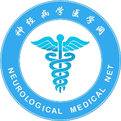Neuroscience Department Introduces Transcranial Doppler Ultrasound
Recently, our hospital has introduced a multifunctional vascular ultrasound device for the neurology department, which is now in regular use. This device can quickly diagnose intracranial arterial vascular lesions and provide a more comprehensive assessment of the intracranial arterial blood vessels, allowing for more accurate diagnoses. Transcranial Doppler (TCD) is a new technology that utilizes … Read more

